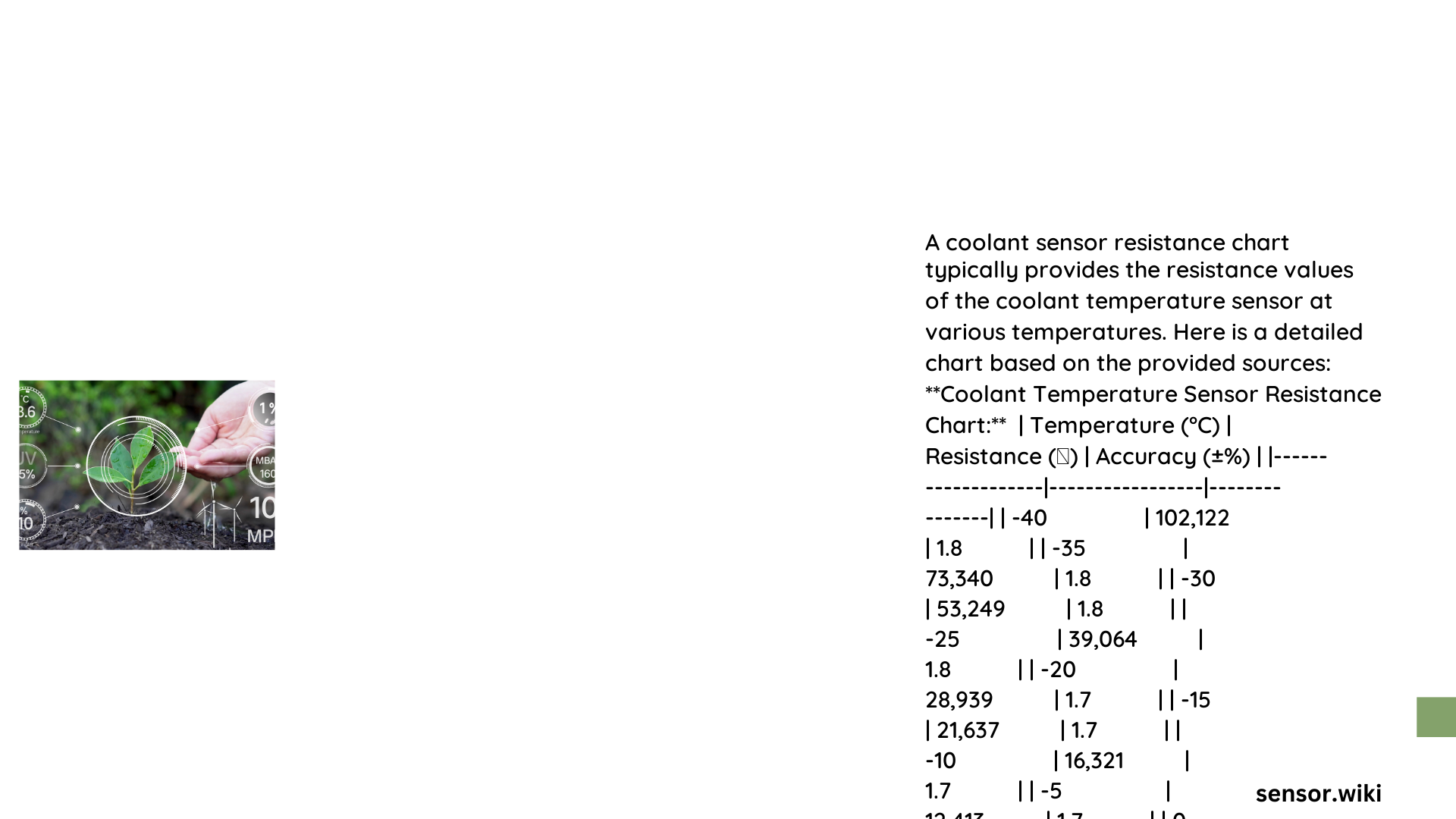A coolant sensor resistance chart provides critical insights into engine temperature monitoring, revealing precise electrical characteristics across various temperature ranges. This comprehensive guide explores resistance measurements, testing methodologies, and diagnostic techniques for automotive coolant temperature sensors, enabling mechanics and enthusiasts to accurately assess sensor performance and potential system anomalies.
What is a Coolant Sensor Resistance Chart?
A coolant sensor resistance chart maps the electrical resistance of temperature sensors at different temperatures, serving as a crucial diagnostic tool for automotive professionals. These charts help technicians:
- Verify sensor functionality
- Diagnose potential temperature monitoring issues
- Understand sensor behavior across temperature ranges
Key Components of Resistance Measurement
- Temperature Range: Typically -40°C to 150°C
- Resistance Values: Measured in ohms (Ω)
- Sensor Variations: Different manufacturers have unique specifications
How Do Coolant Temperature Sensors Work?

Coolant temperature sensors operate using thermistor technology, where electrical resistance changes proportionally with temperature. As engine temperature increases, sensor resistance decreases, allowing the engine control unit (ECU) to monitor and adjust performance.
Resistance Characteristics
| Temperature (°C) | Typical Resistance (Ω) | Sensor Behavior |
|---|---|---|
| -40 | 100,000+ | High Resistance |
| 0 | 9,500 | Moderate Resistance |
| 50 | 1,000 | Low Resistance |
| 100 | 180 | Minimal Resistance |
What Tools Are Required for Testing?
Essential equipment for coolant sensor resistance testing includes:
- Digital multimeter
- Thermometer or infrared temperature gun
- Manufacturer-specific resistance chart
- Scan tool (optional)
How to Perform Resistance Measurement?
Step-by-Step Testing Procedure
- Disconnect Sensor
- Ensure engine is cool
- Disconnect electrical connector
-
Use multimeter set to resistance mode
-
Measure Resistance
- Connect multimeter probes
- Record resistance value
-
Compare with manufacturer specifications
-
Verify Temperature Correlation
- Cross-reference resistance with temperature chart
- Check for consistent resistance changes
Common Resistance Chart Variations
Manufacturer-Specific Differences
- Delphi Sensors: Highly precise, ±1.5°C accuracy
- General Motors: Broader resistance ranges
- Subaru: Specific temperature-resistance profiles
Potential Diagnostic Challenges
Factors affecting coolant sensor resistance measurements:
- Sensor age
- Corrosion
- Electrical connector integrity
- Environmental conditions
Best Practices for Accurate Measurements
- Always use manufacturer-specific charts
- Perform tests at consistent temperatures
- Replace sensors showing significant deviation
- Clean electrical connections
When to Replace a Coolant Temperature Sensor?
Replace the sensor if:
- Resistance values deviate more than 10% from specifications
- Inconsistent temperature readings
- Check engine light indicates sensor malfunction
- Vehicle experiences performance issues
Advanced Diagnostic Techniques
- Use oscilloscope for precise resistance tracking
- Compare multiple sensor readings
- Perform thermal cycling tests
Conclusion
Understanding coolant sensor resistance charts is crucial for maintaining vehicle performance and preventing potential engine damage. Regular testing and proper interpretation of resistance values can help diagnose and prevent temperature-related issues.
